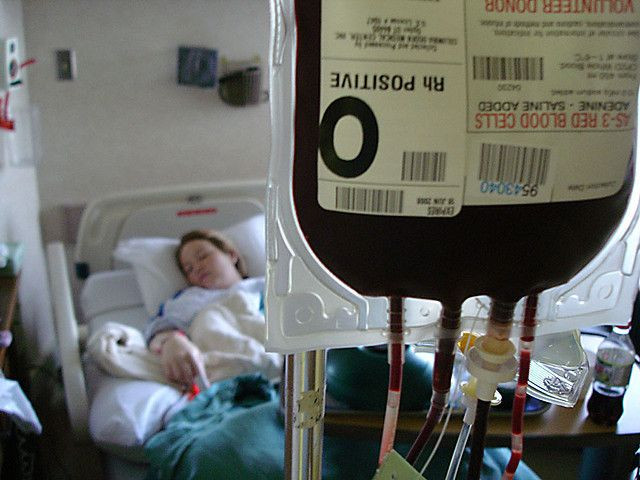Blood Transfusion Using One-Size-Fits-All Artificial Blood Could Revolutionize Reach And Shelf Life

In a bid to solve the global problem of blood transfusions and donations not having adequate supply, researchers from the University of Essex are at work designing an artificial blood that can be stored at room temperature and administered to anyone.
Artificial bloods (and real blood, for that matter) all tend to rely on a similar mechanism to ferry oxygen via red blood cells — a specific type of protein known as hemoglobin. To develop their artificial blood, the researchers have developed a project, called Haem02, which relies on hemoglobin-based oxygen carriers (HBOC) to mimic the properties of actual hemoglobin (Hb). And because the product they’ve created is naturally detoxified by the body’s own defenses, the normal complications HBOC can produce are erased.
“It means we could overcome some of the inherent problems with transfusions as there would be no need for blood group typing and a longer shelf life means you are able to stockpile the supplies necessary for major disasters,” explained study leader Professor Chris Cooper in a statement.
Cooper and his team hope the project will overturn the largest existing challenge with blood transfusions: blood types. As human mammals, our blood is consistently inconsistent. The four bins our blood can fall into, A, B, AB, and O, represent four groups (or types) of antigens found on the surfaces of red blood cells. People with the blood type AB Positive are universal recipients because their red blood cells come stock with the antigens of both A and B types. By contrast, people with O Negative blood carry no antigens, so their blood can safely mix in with any type of red blood cells.
Then there is the problem of storage. Ordinary blood must be refrigerated, which, in large quantities, can become expensive — especially if the blood sits longer than its shelf life and must be discarded. For this reason, one of the team’s other priorities was developing a substance that could live outside refrigeration for a long time. This prolonged expiration date not only allows clinicians to use the blood on more people, Cooper explains. “It also offers the opportunity for routine transfusion support in ambulances or at remote inaccessible locations.”
The project comes with some natural limitations. HBOC are notoriously fickle when it comes to durability and safety. They are not approved by the Food and Drug Administration (FDA) due to their outstanding toxicity. As opposed to hemoglobin, which works inside the red blood cells, HBOC work on the outside of the cell to transport oxygen.
“This cell free Hb can cause high blood pressure; Hb can also escape the blood vessels and damage the kidneys and other organs,” the FDA said in a statement. “Therefore, FDA has not approved any HBOCs for use in the United States, and the regulatory agencies of most other countries also have not approved HBOCs.”
Prior attempts at creating artificial blood have relied on hemerythrin, a translucent yellow liquid that exists naturally in many invertebrates and performs many of the same functions as hemoglobin.
Ultimately, Cooper and his team face something of an uphill battle, as voluntary blood donation programs remain mostly stagnant. Although roughly 38 percent of the U.S. population is eligible to donate, according to the Red Cross, less than 10 percent actually do each year. The funding Cooper and his team recently received will go a long way, he believes, toward uplifting that deficit with a technological bypass.
“This funding allows our team to take to first step on the road to bridging the gap between top class research and the commercialization of a product,” he said.
Published by Medicaldaily.com



























